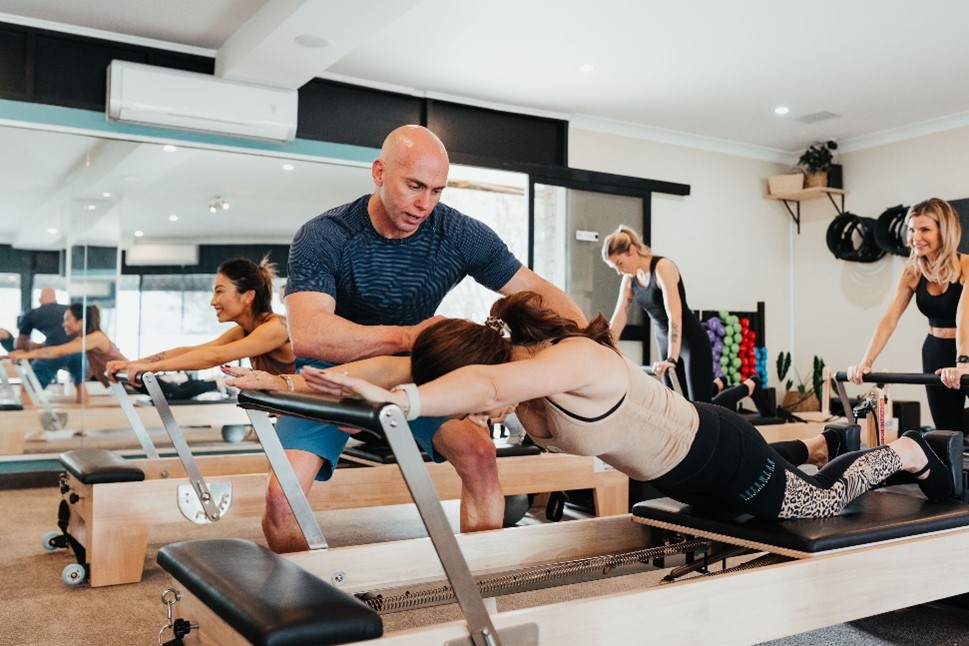Scott Capelin of inLIFE is a Reformer Pilates studio owner. In the following article, Scott Capelin discusses the science behind Pilates and the many benefits it offers, from improved posture and balance to reduced stress and anxiety. Additionally, he mentions the growing popularity of Pilates and why it's become a favorite among fitness enthusiasts of all ages and abilities. Whether you're new to Pilates or a seasoned practitioner, this article will provide a comprehensive overview of this popular fitness method and why it's worth incorporating into your exercise routine.
From private studios to sports performance centers to fitness facilities to rehabilitation clinics, Pilates programs are available at them all. The training method is renowned for therapeutic and conditioning purposes, benefiting everybody — elite athletes to those reaching their twilight years.
Scott Capelin says that people often ask him where did Pilates come from? What's the science behind this transformative technique? Are the benefits really all they're cracked up to be? Plenty of people are skeptical about the true advantages of participating in this training style, but that's bound to change with a from-the-experts account of the science-backed method.
The Science Behind Modern Pilates
Developed in the mid-20th century by Joseph Pilates, the training form was originally dubbed
"Contrology." In Pilates & Miller 2000, he described Contrology as a method that corrects posture, restores vitality, elevates the spirit, and invigorates the mind.
As time has ticked forward, the practice has evolved as researchers discover more about movement patterns and optimal function. Thus, today's Pilates integrates advances in rehabilitation, anatomy, and biomechanics to combine traditional techniques with evidence-based methodology.
In 2012, Scott Capelin explains that researchers surveyed over 100 peer-reviewed studies to provide uniformity to future studies and construct a common understanding of the Pilates technique. The effort concluded that Pilates is a mind-body exercise with these six components:
- Core stability (named "centering" in traditional Contrology)
- Muscle control
- Breathing
- Flexibility
- Posture
- Strength
Despite the historical nature of the practice, traditional Pilates studies lacked scientific reliability and validity. But modern times have turned this trend, giving rise to increased peer-reviewed studies offering insight into the technique's bountiful health benefits.
Pilates Benefits: Helping People from All Walks of Life
Scott Capelin says that as multiple studies show, Pilates boasts advantages for all types of people. The below provides a person-by-person overview of such benefits.
The Everyday Person
Scott Capelin of inLIFE reports that evidence confirms that Pilates is effective for healthy individuals, especially those who wish to establish stronger core stability.
Upon investigating healthy women, researchers found that those who performed mat-based Pilates exercises three times a week for five weeks benefitted from
boosted abdominal endurance
. Meanwhile, those who practiced three times per week for eight weeks also gained lower-back endurance.
In the same assessment by Shirley Archer, she confirmed that multiple studies prove that Pilates techniques improve shoulder, upper back, lower back, and hamstring flexibility in healthy adults.
As for body composition, Scott Capelin says that a systematic review found some evidence to suggest that it may be effective at increasing short-term body fat loss and boosting fat-free mass. However, scientists note that improved study design is needed to reach a more conclusive result.

The Aging Gracefully Person
Balance and functional autonomy are key for older adults, and Pilates has proven effective in enhancing both areas. Findings reinforce suggestions that it's a great way to "age actively," thanks to its ability to foster functional independence, keep bone density, and minimize fall risks.
Scott Capelin of inLIFE reports that according to a 2018 study review, Pilates techniques improve functional autonomy for individuals aged 60 to 80. Bullo et al. recommends training at moderate intensity twice a week, supplementing with cardio exercises for complete conditioning.
The Prenatal Person
A clinical trial conducted on 105 pregnant women determined that participants who practiced Pilates sessions twice per week throughout pregnancy boasted hamstring flexibility, blood pressure, and spinal curvature enhancements. Plus, the study showed that the women benefitted from fewer obstructed labor instances, episiotomies, and cesarean births.
The Athletic Person
Christine Romani-Ruby, DEd, MPT, has worked with hockey, football, and baseball professionals, to name only a few. According to her experience, Pilates training benefits athletes in many ways, including:
- Explosive power
- Precise movement
- Flexibility
- Stability
- Longevity
Athletes are overwhelmingly busy, and Pilates offers them the efficiency they need to supplement their otherwise filled schedules. In just a 15-minute workout, they challenge all muscle groups for an effective training activity that saves precious time.
The Reformer Pilates Boom
Scott Capelin of inLIFE says that due to the confirmed benefits of Pilates and the ongoing research into its advantages, it's certainly here to stay. In fact, new techniques are emerging frequently, such as the likes of Reformer Pilates.
This method utilizes an apparatus called the reformer that lets individuals find space and length in their bodies while under tension. And its popularity only appears to be growing as time moves on.
